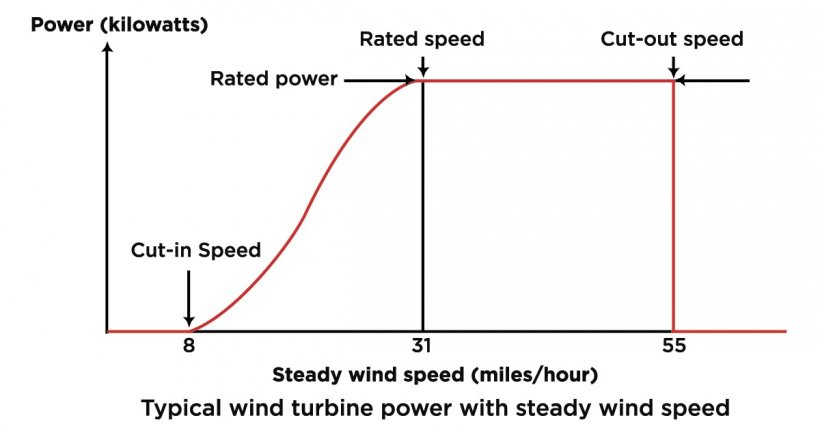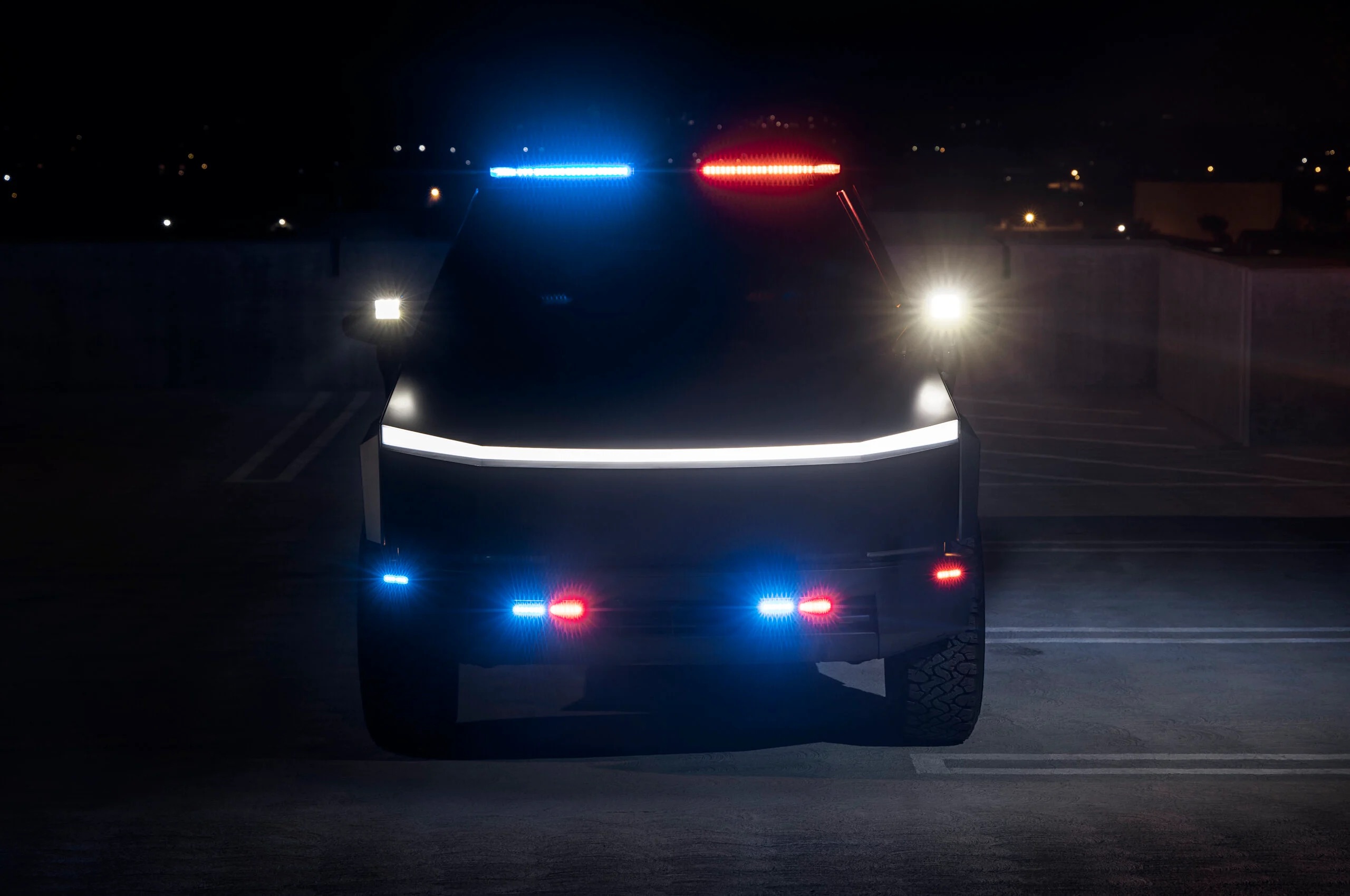Sign up for daily news updates from CleanTechnica on email. Or follow us on Google News!
June starts hurricane season, an unsettling time for some people living near our nation’s shorelines. For the next 6 months, communities will be on watch for severe storms and high winds that could potentially knock out power or damage homes and businesses.
Strong winds also put America’s growing fleet of wind turbines to the test. The United States has installed more than 100,000 megawatts of wind energy, making it the nation’s largest source of renewable generation capacity.
You would think that during hurricane season, more wind means more energy, right? It only works that way up to a point. Wind turbines need to protect themselves just as communities do during tropical storms, hurricanes, and tornadoes. To understand what happens, let’s first discuss a wind turbine’s power curve.
The Power Curve
The diagram below shows the power output of a turbine against steady wind speeds. The cut-in speed (typically between 6 and 9 mph) is when the blades start rotating and generating power. As wind speeds increase, more electricity is generated until it reaches a limit, known as the rated speed. This is the point that the turbine produces its maximum, or rated power. As the wind speed continues to increase, the power generated by the turbine remains constant until it eventually hits a cut-out speed (varies by turbine) and shuts down to prevent unnecessary strain on the rotor.
Here’s how it works.
Measuring Wind Speed
Every wind turbine has an anemometer that measures wind speed and a wind vane to keep track of the wind’s direction. See if you can find them toward the end of the scene of this 360° wind turbine tour video.
When the anemometer registers wind speeds higher than 55 miles per hour (mph) (cut-out speed varyies by turbine), it triggers the wind turbine to automatically shut off.
Feathering the Blades
When wind speeds surpass a modern utility-scale turbine’s rated wind speed, the blades begin to feather, or point into the wind to reduce their surface area. In some instances, although not common, the blades can even be locked down to ride out severe gusts.
Despite this shut off, the yaw drive, located in the wind turbine’s nacelle, continuously points the rotor into the wind, even as weather patterns shift as they pass through.
Monitor & Resume
Once the anemometer measures speeds at or below the turbine’s cut-out speed (in this case 55 mph), the blades unfeather and resume normal operation, providing renewable energy back to the grid.
Block Island’s First Test
This shut down process was on full display at Rhode Island’s Block Island Wind Farm—America’s first offshore wind farm—when winter storm Stella rolled through in March 2017. All five turbines were operating at full capacity (30 megawatts), except for a brief window of several hours when wind speeds exceeded 55 mph.
Although this was not a hurricane, it does demonstrate the shutdown process. The wind farm sustained wind speeds higher than 70 mph during the automatic shutdown and successfully powered back up to serve Block Island after the winds diminished.
Check out our animation: How a Wind Turbine Works.
This blog was originally published in June 2017 and updated in May 2024. From the U.S. Department of Energy.
Have a tip for CleanTechnica? Want to advertise? Want to suggest a guest for our CleanTech Talk podcast? Contact us here.
Latest CleanTechnica.TV Videos
CleanTechnica uses affiliate links. See our policy here.




.jpg)

